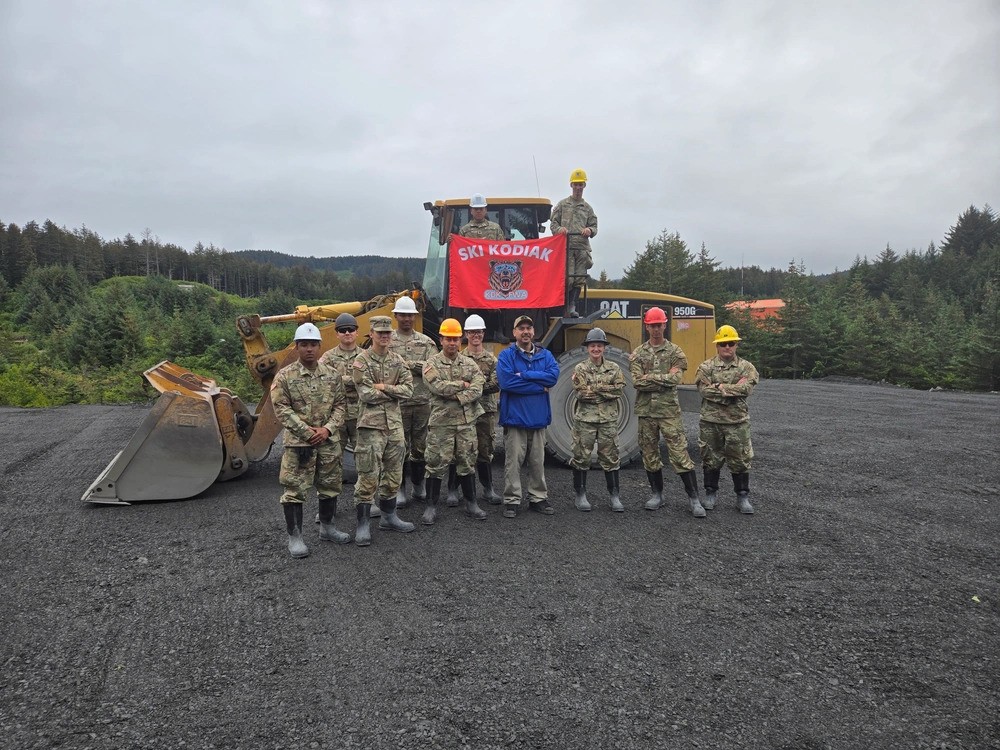Project team standing on completed gravel pad with the SIDCO Board Chair. Front row, from left: Sgt. David Arenas, Spc. Jacob Seippel, Sgt. Robert Hooker. Spc. Antonio Crosby, Sgt. Hugo Juarez, 2nd Lt. Zachary Hunter, Robert Boskofsky Sr., Capt. Sarah Plantamura, Sgt. Isaac Alexander, Sgt. Walter Duncan. Second row, from left: Pfc. Jason Ignacio, Spc. Zachery Whitely. (Courtesy photo)
The DOD released its 2024 Arctic Strategy in June of this year, setting out three lines of effort to improve its ability to monitor and respond to new challenges in the Arctic Region: 1) enhance the Joint Force’s Arctic capabilities, 2) engage with our Allies and partners, and 3) exercise presence in the Arctic by training both independently and alongside Allies and partners. The efforts of the 70th BEB, 1/11th Airborne Division Soldiers aligned directly with this second line of effort, where the DOD calls on the military to “engage with…Alaska Native Tribes and communities…in order to strengthen integrated deterrence and increase our shared security.” The Arctic Strategy also calls on the military to “consult and coordinate with Alaska Native Tribes, communities, and Alaska Native Corporations. Further, the DOD will work to incorporate Indigenous Knowledge about the Arctic to inform and improve our ability to effectively operate in the region and to increase our understanding about potential DOD impacts on subsistence culture and ways of life.” Participating in IRT projects in Alaska’s remote Arctic environment is a way for military units to train in the Arctic and build connections with, and learn from, Native communities across the state of Alaska.
The eleven Soldiers that took on the project traveled from Fort Wainwright, AK to the Village of Ouzinkie. The team included heavy equipment operators, project managers, a surveyor, and a mechanic. Over the course of the thirteen days, the team surveyed and cleared the site, hauled 290 dump truck loads of gravel, installed geotextile, and graded and leveled the pad. The internet café that will eventually be built on the site will provide a space for the local Alutiiq dance team to practice, and an area for economic opportunities and wellness classes.
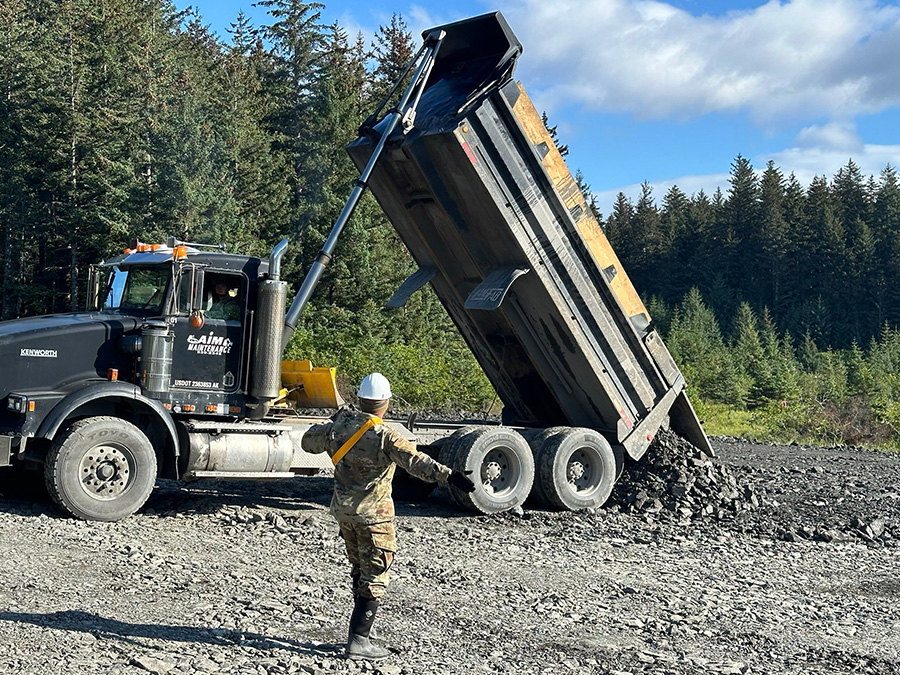
Sgt. David Arenas directing gravel delivery on project site. (Courtesy photo)
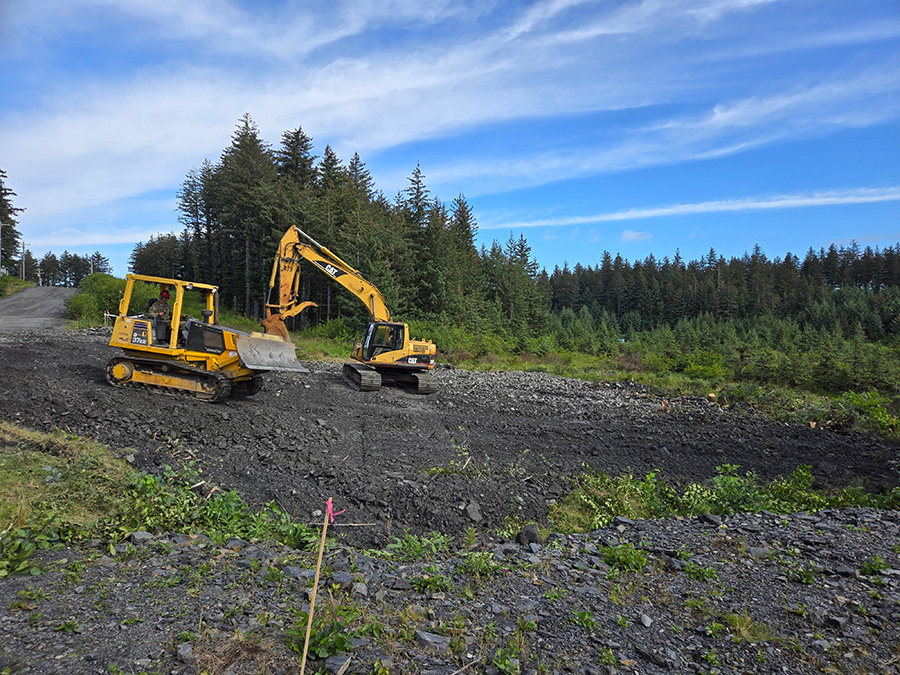
Sgt. Isaac Alexander and Spc. Jacob Seippel grading the project site. (Courtesy photo)
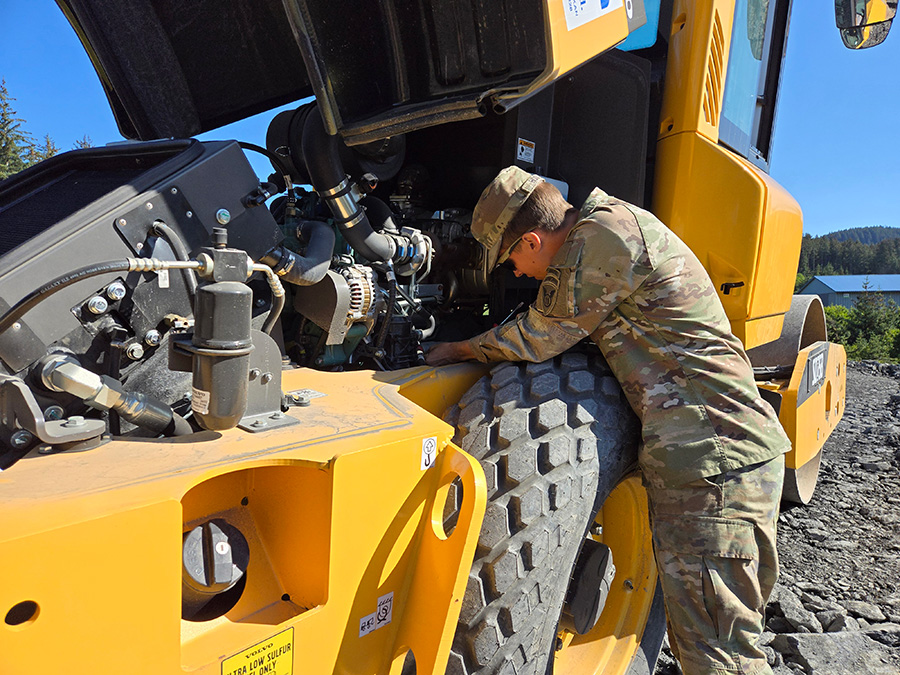
Sgt. Robert Hooker repairing the roller. (Courtesy photo)
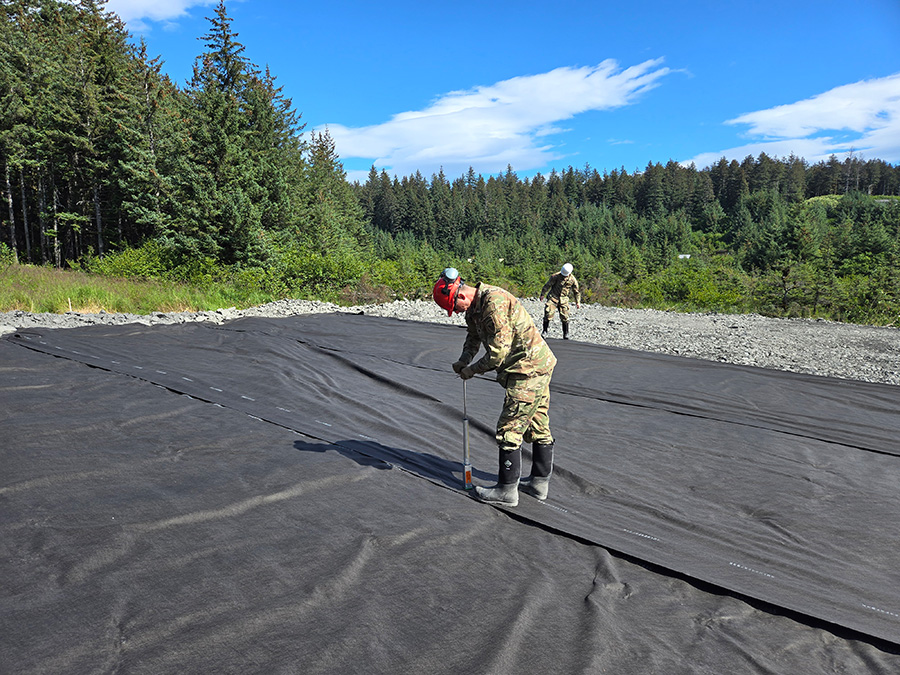
Sgt. Isaac Alexander installing geotextile. (Courtesy photo)
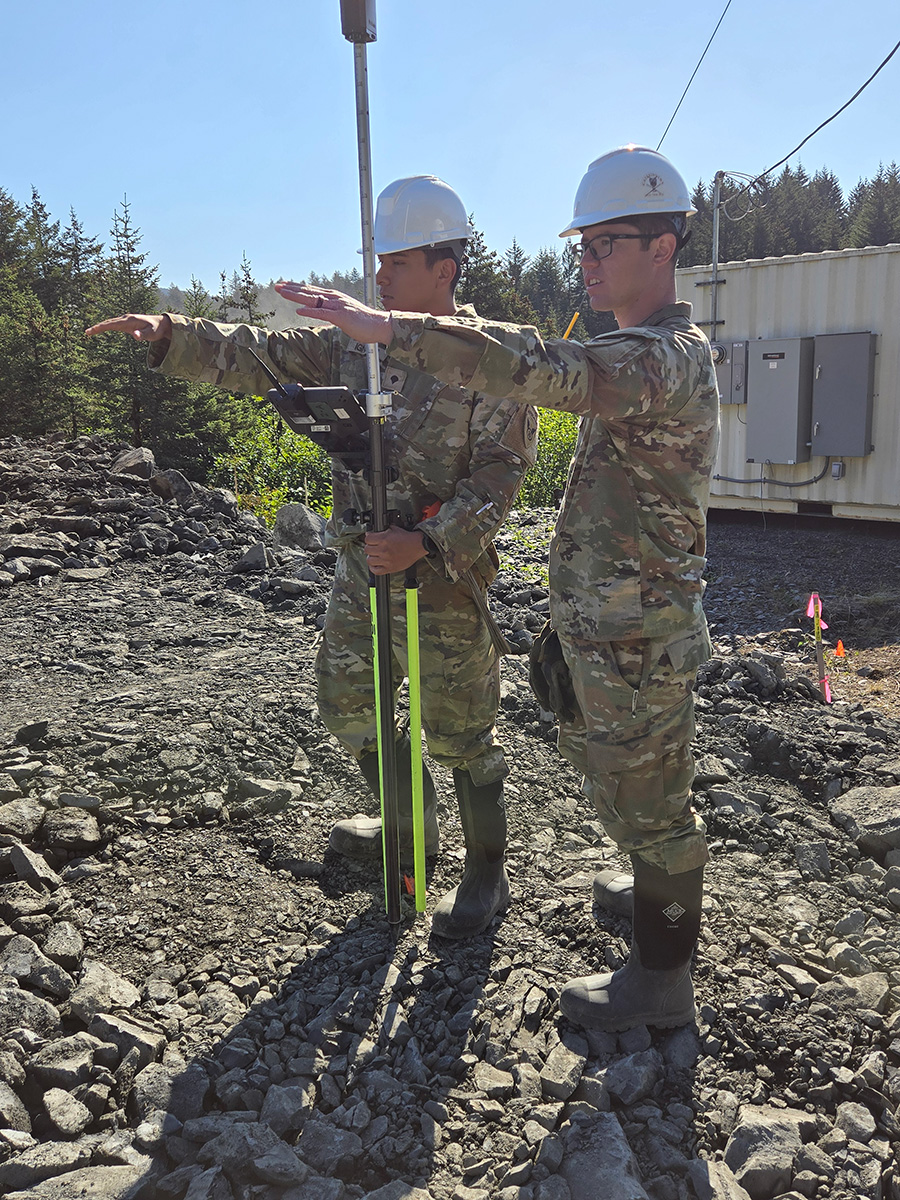
Pfc. Jason Ignacio discussing survey results with 2nd Lt. Zachary Hunter. (Courtesy photo)
Aside from practical training experiences, the team also gained valuable cultural experiences with the local community. After the project was completed, the team was invited to participate in a community event on the Ouzinkie pier that celebrated the Tustumena Ferry’s continued service to the island and recognized a retiring tribal clerk. During the event, the team also promoted SPC Zachery Whitely, who served as the loader operator. He stated that the project was “a great opportunity to create a good connection with the civilians in Alaska, and it’s a great opportunity to do something I love to do.” The community event was a culmination of the connection built between the project team and the village.
Alaska offers harsh Arctic, Sub-Arctic, high altitude, extreme cold-weather, locationally dispersed, and diminished communication-capable environments. IRT is a way for Soldiers to train in these conditions while furthering engagement and interoperability with partners across the state. In preparation for the project, the team coordinated with multiple agencies, including the Coast Guard, Alaska Army National Guard, Alaska State Defense Force, and personnel and sustainment transport companies. This type of inter-agency coordination is uncommon in typical training exercises, and it and provided even further professional development for the Soldiers.
The DOD has made it clear with the publication of the 2024 Arctic Strategy that the United States views the Arctic not only as a region of strategic importance but also as a region where the U.S. military personnel could have to fight in in the future. Alaska is the foremost Arctic environment in which the Army operates, IRT projects like that in Ouzinkie are one way to further the DOD’s Arctic Strategy by building connections with communities across Alaska and building necessary Arctic proficiency. Without even taking place in the winter months or in a location above the Arctic Circle, this IRT project produced remarkable training for the Soldiers and benefited the Ouzinkie community. To further support the Arctic Strategy, future IRT projects could take place in locations in Alaska that offer the most unforgiving environment that Soldiers could face in a future conflict in the Arctic. The Alaska Army National Guard regularly conducts IRT projects, and active duty Army should be taking advantage of these same training opportunities. Building relationships through IRT with rural communities in Alaska and military units will assist in the DOD’s goal to maintain dominance in the Arctic. There is an endless amount of untapped potential within Alaska for realistic training that both strengthens communities in remote areas and increases understanding of best practices for operating and winning in the Arctic.
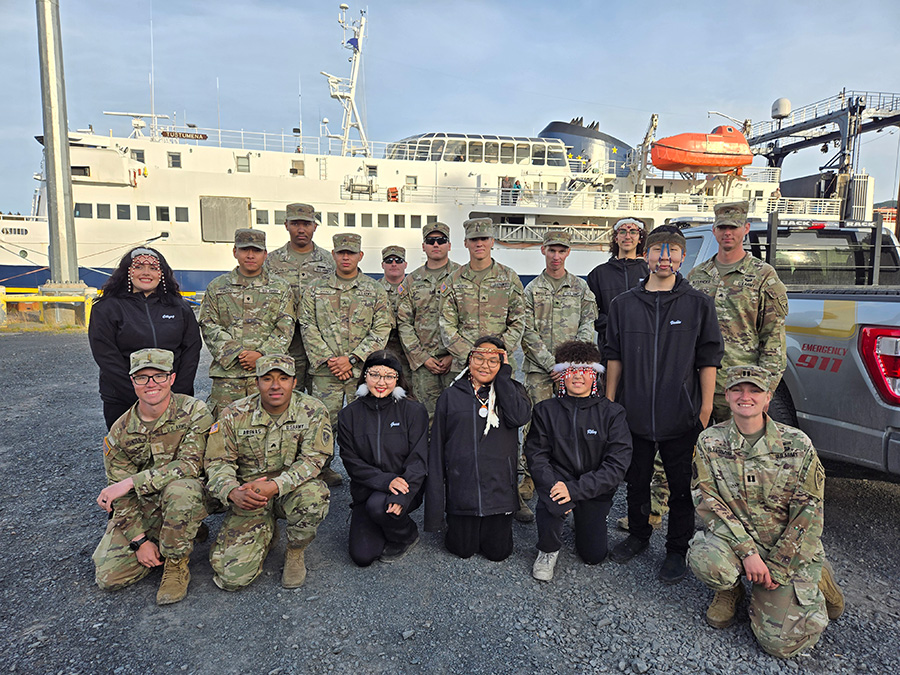
Project team members with the Ouzinkie Alutiiq dance team. (Courtesy photo)
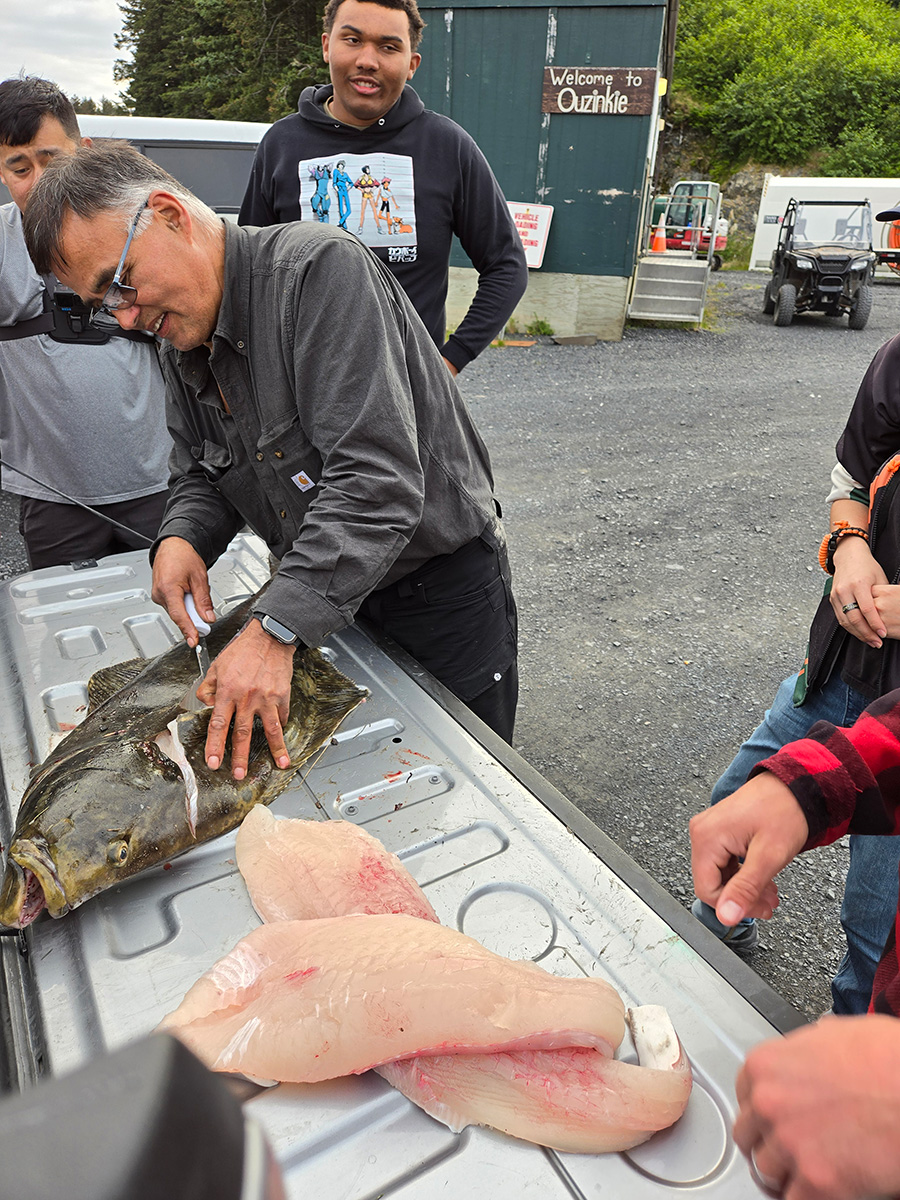
Soldiers learning how to filet halibut, caught fresh off the pier. (Courtesy photo)

